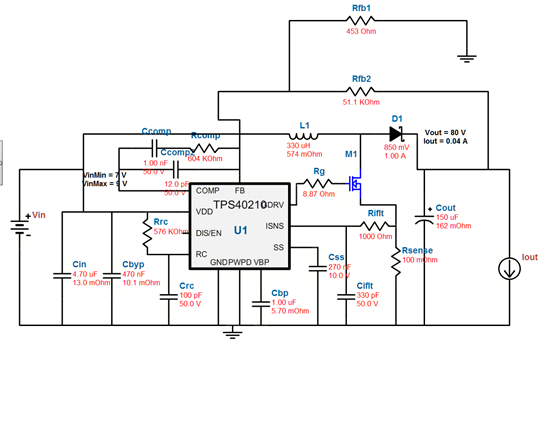Spec: 9V in, 80V out @ 40mA
I used webbench for the design,
The first problem is that it has trouble starting, since very quickly after it starts current overprotection kicks in and PWM turns off while SS drains. This can be overcome by shorting the sense resistor for a second, or slowly ramping up the input voltage. I assume a larger capacitor on the SS pin would help?
The main problem is, the output voltage isn't being reached, so the chip seems to be maxing out the duty cycle to try and increase output voltage, ignoring current, etc. The Duty cycle is ~97% is too high, to the extent of decreasing returns, so the duty cycle need to actually decrease for the output voltage to increase. A side effect is that the current through the inductor and mosfet is much higher than it should be causes significant heating.
Some quick questions, is the current sense circuitry suppose to adjust the duty cycle when the ISNS pin shows the current is getting high, or does it just turn off the PWM output? It would be nice if the controller could adjust the duty cycle to prevent an over-current shutdown.
Is there a way to limit the duty cycle?(increasing switching frequency?) Am I missing something?


